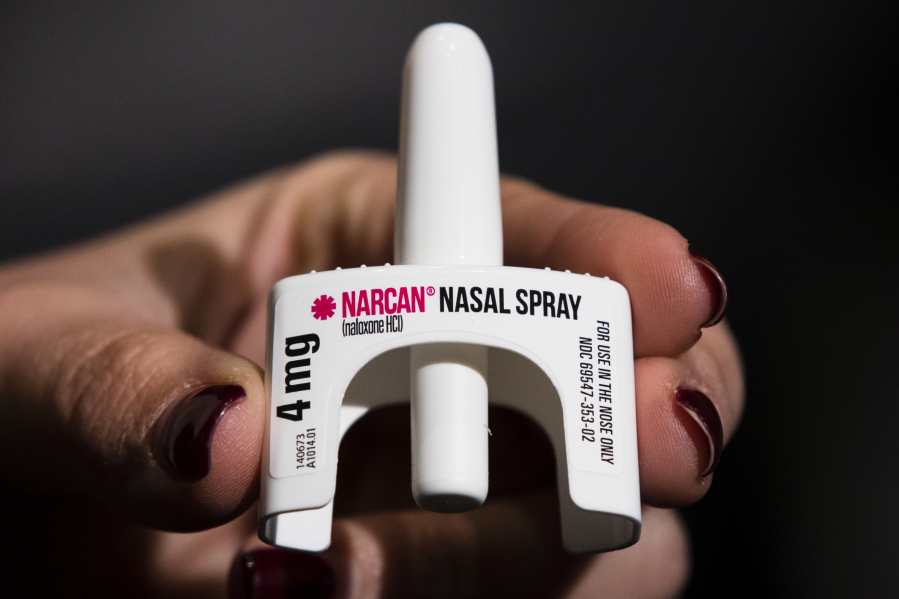OLYMPIA — A majority of unintentional drug overdose deaths in Thurston County had at least one opportunity for intervention from 2020 to 2022, according to Washington state data.
That statistic appears in the Unintentional Drug Overdose Data dashboard, a new way for the public to review the characteristics and circumstances of overdose deaths. The state Department of Health announced the dashboard in a Thursday news release.
“Our new Unintentional Drug Overdose Data dashboard is an innovative tool that empowers our communities with data to understand, address, and combat the public health crisis caused by substance use disorders in Washington state,” Tao Sheng Kwan-Gett, Chief Science Officer for DOH, said in the release.
Thurston County is one of 13 counties that are included on the dashboard. DOH says those counties account for 88% of statewide overdose deaths and more counties will be added later.
The state already has an opioid and drug overdose data dashboard that shows all overdose deaths, hospitalizations and EMS responses with filters for residence, age, sex, race and ethnicity for each county.
That dashboard shows overdose deaths have been increasing in recent years. In 2022, the data shows Thurston County had an adjusted overdose death rate of 43.3 per 100,000 people as of Tuesday. In 2020, adjusted rate for the county was 16.5.
Local officials have blamed this trend on an influx of fentanyl, a synthetic opioid that’s 50-100 times stronger than morphine and often mixed with numerous other drugs, The Olympian previously reported.
The new dashboard displays more demographic, drug category and circumstance details for unintentional and undetermined overdose deaths. It’s updated in the spring and fall with data from the state Unintentional Drug Overdose Reporting System, or SUDORS.
That system includes information from coroner and medical examiner reports, toxicology, autopsy and available prescription drug monitoring program data.
Kwan-Gett said it’s important to raise awareness, increase access to treatment and provide people who use drugs with naloxone, a medication that can reverse an opioid overdose.
“Together, through transparency, compassion, and collaboration, we can turn this data into action to build a safer, healthier future for all Washingtonians,” Kwan-Gett said.
What are the circumstances of overdose deaths in Thurston County?
The state’s overdose data dashboard indicates there were at least 266 drug and opioid overdose deaths in Thurston County from 2020 to 2022 as of Tuesday, including 126 in 2022.
Those numbers are based on death certificates and include accidental poisoning by drugs, intentional self-poisonings by drugs, assault by drug poisoning and drug poisoning of undetermined intent.
Thurston County Coroner Gary Warnock previously said the number of overdose deaths in 2022 exceed 150 in March. At the time, he said that figure was fluid due to a number of pending cases.
The Olympian has asked DOH to elaborate on the discrepancy between those totals.
The new dashboard shows SUDORS recorded 178 unintentional overdose deaths in Thurston County from 2020 to 2022 as of Feb. 17. That includes 52 deaths in 2022.
Illicitly manufactured fentanyl accounted for 60% of the 178 deaths reported from 2020 to 2022 in the new dashboard.
The data also shows 73% of drug overdose deaths had at least one opportunity for intervention, meaning circumstances potentially allowed for the decedent to receive care or life-saving measures prior to their death.
Bystanders were present in 49% of Thurston County overdose deaths, according to the dashboard. The decedent had a known history of mental health diagnosis in 35% of deaths and 19% had current or prior substance use disorder treatment.
Other potential intervention opportunities included 14% who were recently released from an institutional setting, 10% whose fatal drug use was witnessed by another person and 9% who had a known history of drug overdose.
Notably, 82% of decedents had a known history of drug misuse and only 14% were experiencing homelessness, according to the data. Naloxone, a medication that can reverse an opioid overdose, was administered in 30% of overdose deaths.
A majority of the overdoses, 56%, occurred in a house or apartment and 10% occurred outdoors or in natural areas, per the data.
Meanwhile, 8% occurred at an unknown location, 7% occurred at a hotel or motel, 7% occurred in a motor vehicle, 6% occurred at a supervised residential facility and 5% occurred at other locations.
The data also shows that 31% of drug overdose deaths involved drugs being administered via smoking, 20% involved injection, 18% involved ingestion and 14% involved snorting.
The dashboard does not show numbers less than 10 in any given category to protect decedent privacy.



